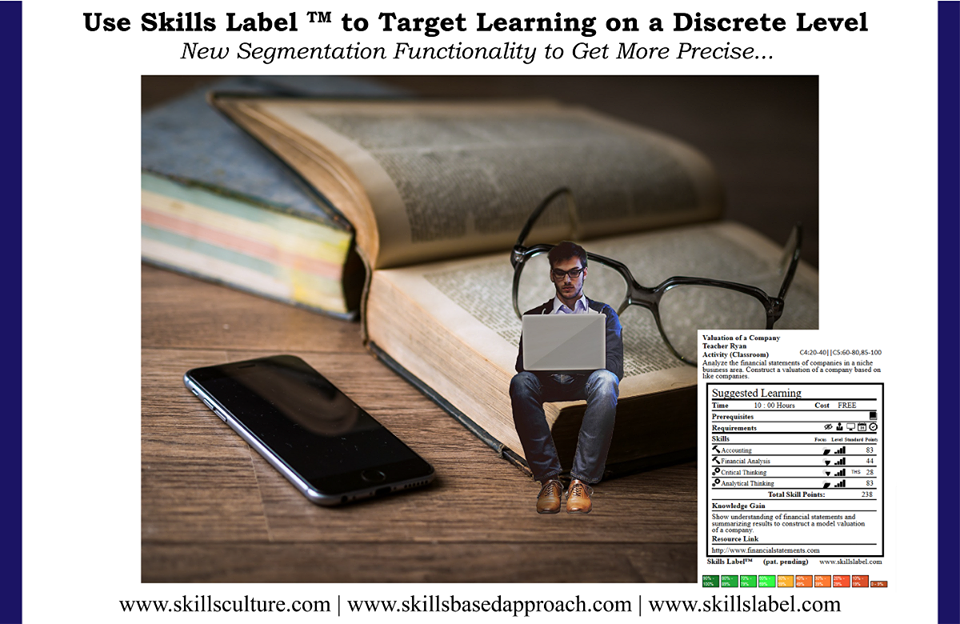In science, we miniaturize to get a better understanding of how stuff works. Each time we get smaller, there are new possibilities on understanding how systems works. I think the same can be said in how we think about learning development and more specifically skills development. I see this happening in two ways: understanding the methods and applications behind skills; and breaking down learning into discrete tasks. Let’s explore the latter.
I have been working on skills development for eight years now. First conceived the Skills Based Approach methodology in 2011 and published the book A Skills Based Approach to Developing a Career in 2013. I have also designed mobile and website applications to use the methodology. I have introduced a system to track the development of skills (Skills Label) and a growth mindset to learning (Skills Culture).
The book remains a useful resource for understanding how the methodology works - constantly cycle through four stages with an evolving skill set. But, in the book, much of the discussion is about working on skills for a course, degree, job or career. I would like to discuss how Skills Based Approach works on a micro level – tasks and projects.
In the book, with the planning stage, I talk about education and career planning for a degree or career two to five years in the future. This type of planning is still worthwhile. For many professions it takes years to materialize and thinking in skills allows for a person to pivot at any time.
But to narrow the focus, let’s simply start with a task and a desired skill level then move through a series of tasks based on performance and choice. This personalizes the experience, introduces some spontaneity, and makes the learning process adaptive – all on a discrete level. (Skills Label is a technology with all this functionality.)
In the book, with the building stage, I talk about setting goals, creating a learning environment, taking next steps, and tracking learning. These remain useful actions to take as someone is learning a skill.
But similar to the planning stage discussion above, it is possible to get on a task level; moreover, instead of relying on the student or learner, much of next actions can be built into a system. For example, a practitioner can map ‘next steps’ based on someone’s performance – this is built into the Skills Label platform. Assessments and goal setting can be aligned to learning gains in the system too.
In the book, with the presenting stage, I talk about how to share skills directly and in abstract ways.
To get on a micro level, let’s represent ‘real-time’ skill competencies. In every experience, a person adds to the breadth and depth of their skill set. Furthermore, it is possible to understand thinking, soft, and multi-disciplinary skills – particularly when they are not the focal point. This is precisely what learning labels – a system to manage and track the development of skills – is meant to accomplish and one feature of the technology is a Skills Emblem – a dynamic learning badge, where ‘real time’ learning gains are represented.
In the book, with the validating stage, I talk about using all the traditional credentials and badges – typically something received after taking a course, completing a certification, etc.
But with the rise of micro credentialism, a personal acquires credentials after completing a project. Over time, a person shares a portfolio with a collection of badges.
Some of the reasons to consider a micro version of Skills Based Approach:
- Skills are expiring faster, so re skilling and upskills is a requirement for most workers.
- New faster, efficient ways to get skills (alternative to traditional education).
- Movement towards project-based work.
Finally, Skills Culture is a mindset with an ethos: “Every experience is an opportunity to apply skills.” This means being conscientious and ‘in the moment’ to practice skills properly and deliberately.
